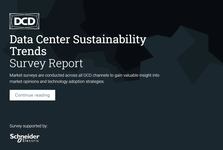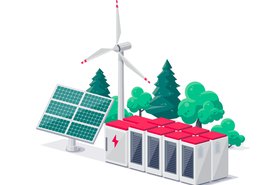The growth of digital infrastructure and its hunger for electricity, water, and other resources is increasingly a matter of public debate. While digital technologies can bring significant improvements to many industries and aspects of our society, the SDIAand its members argue that we lack the necessary information and transparency on the environmental and social impacts stemming from digital products and services.
As a society, we need to be able to conduct scientific analysis, identifying the facts and evidence, so that our lawmakers can make informed decisions, aligned with the Green Deal objectives (see also here)
Gathering data, making them available for all, setting ambitious targets: for SDIA, it is imperative for the IT industry to measure its footprint and make it transparent, before it can be lowered.
No transparency, no motivation
When listening to the industry and companies responsible for the expansion of the infrastructure underpinning our digital economy, they point towards increased demand from consumers and businesses — driven by digitalization, remote working, etc. Unfortunately, those consumers and businesses are not yet empowered to connect their consumption of digital products and services with the environmental impact created by digital infrastructure. When it comes to environmental transparency, operators of digital infrastructure are not leading by example, making it difficult for the remaining value chain to assess and reduce their environmental impact.
Interestingly, the IT industry could learn a lot from other economic sectors, where transparency has almost turned into a “new normal”. For example, let’s consider the car and automotive industry — regulation drove transparency on GHG emissions for the consumer. Has this led to more innovation in the automotive sector? Absolutely, as the emergence of the electric car demonstrates, as well as thermal efficiency improvements in combustion engines. In the energy sector, there is almost complete transparency regarding the environmental impact of electricity and heat production. That impact can be attributed to the awareness of consumers and businesses — when a business consumes electricity it is aware of the environmental impact created.
All this illustrates that transparency is a powerful regulatory tool enabling the market to readjust itself around important societal concerns such as climate change action.
Lobbying to avoid the issue
While key discussions about energy efficiency and resource consumption are taking place in Brussels, the digital infrastructure industry continues its lobbying efforts to lower expectations and avoid any concrete short-term changes in transparent environmental data reporting or operations of their facilities. This is despite making bold public claims on ambitions to become “climate neutral”. Without transparency it is not possible to verify any of those claims publically.
Even though IT does not appear tangible to all of us, it has a huge impact on our environment and society which needs to be measured and managed, in the same way we do for the transport sector or other industries.
When we look at digital infrastructure — including data center operators and cloud infrastructure providers - opaque practices and greenwashing still remain the golden rule over open data and transparency.
Quite often, we hear that transparency and security cannot go hand in hand in the data center industry, due to the criticality of the facilities and trade secrets. This is nonsensical. Releasing such parameters as: GPS coordinates, altitude, surface area, the data center type (small to hyperscale), standardized effectiveness indicators (power usage effectiveness, water usage effectiveness), and the amount of energy or water consumed by the infrastructure does not put clients’ data protection at risk. The same, and even more transparent environmental impact information is released for power plants across the world — arguably the most critical infrastructure in our society. Digital infrastructure should not be treated as more confidential than the energy sector in Europe.
Greenwashing drives unsustainable growth
The other risk from non-transparency and the marketing claims that come with “carbon-free”, “carbon neutral”, is that it propels the perpetual creation and consumption of ever more new software, data, and digital products, without having to worry about the environmental costs. Yet, when last looking at the underlying facilities we can see new cement, steel, and hundreds of thousands of servers containing rare metals and earths which are tangible environmental costs to our planet. Those costs and impacts need to be quantified and reported in a responsible and harmonized way, all over the EU.
Some striking figures undeniably highlight that preserving the current status quo is not a sustainable path: for example, in the Netherlands, one data center can consume the same amount of energy as 370,000 households. From the limited figures available, approx. 626 billion litres of water use was attributable to US data centers in 2014, and some data center operators are reported to draw more than half of their water from potable sources. As a consequence of this lack of transparency, calculating data centers' energy usage remains highly controversial. It is reported the sector consumes one to two percent of global electricity, but some studies suggest it could be significantly higher. Furthermore, it is projected that “data center energy usage will double by 2030”. As a society, we ought to know the environmental and social impact of the digital sector, it is time for transparency.
EU institutions and national authorities have a key responsibility to ensure relevant transparency obligations are no longer optional for data centers on the European continent. This transparency is not an end goal by itself.This is a prerequisite to start shaping, based on rigorous fact-finding and data gathering, ambitious public policies putting Europe in a leading position (again) to mitigate resource scarcity, and climate change — building the foundations for a more sustainable, collective digitized future.
The Sustainable Digital Infrastructure Alliance (SDIA) is a nonprofit industry assocation with more than 100 members and partners working to catalyze the transition to a sustainable digital economy.
More in Sustainability
-

-

Sponsored New fuels of tomorrow
-




